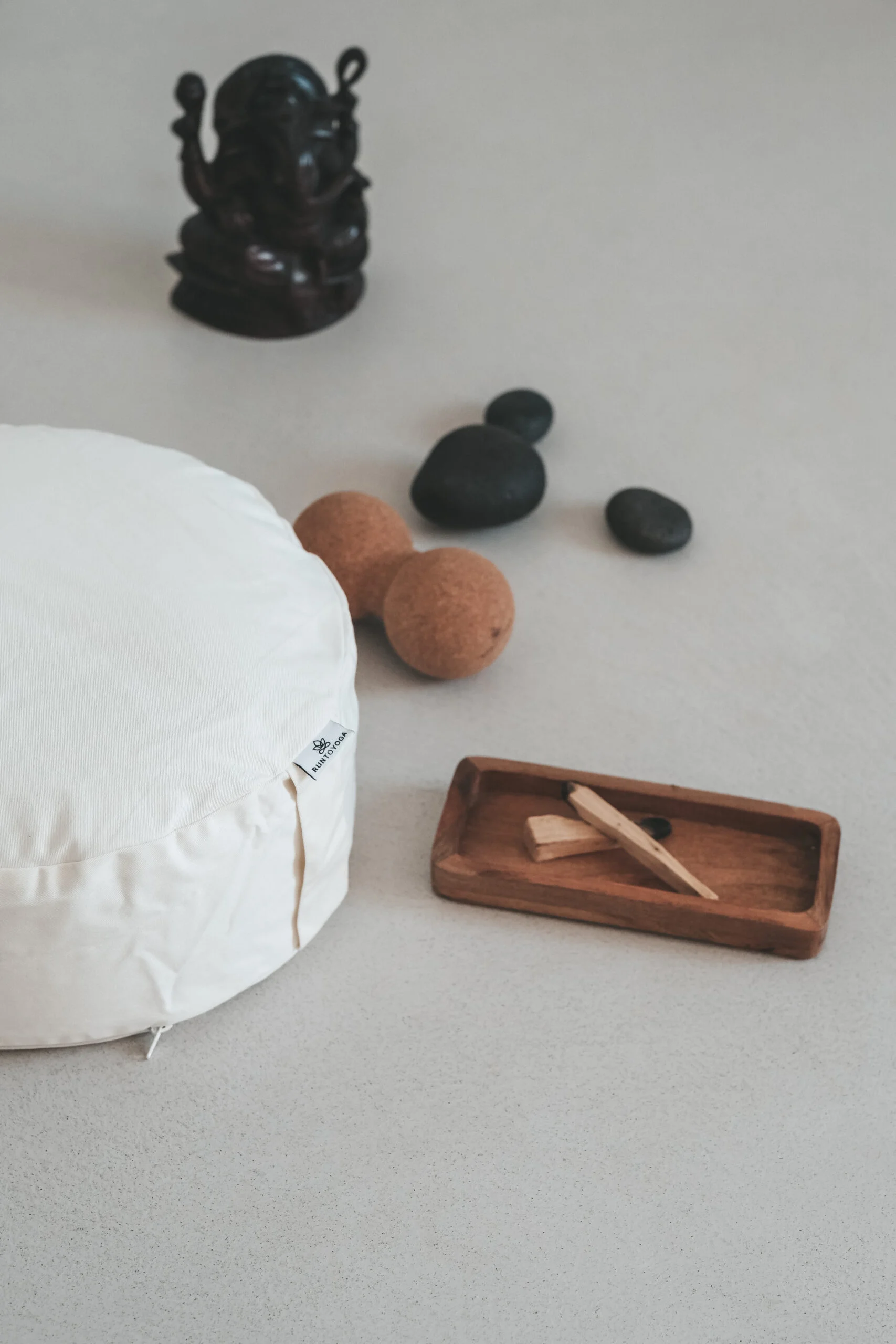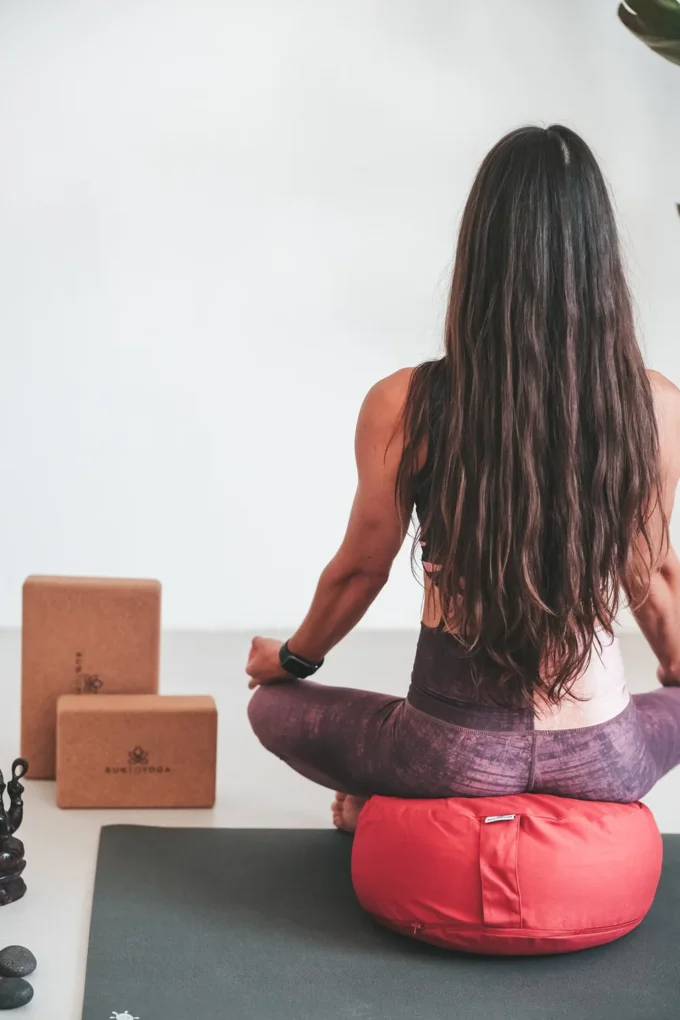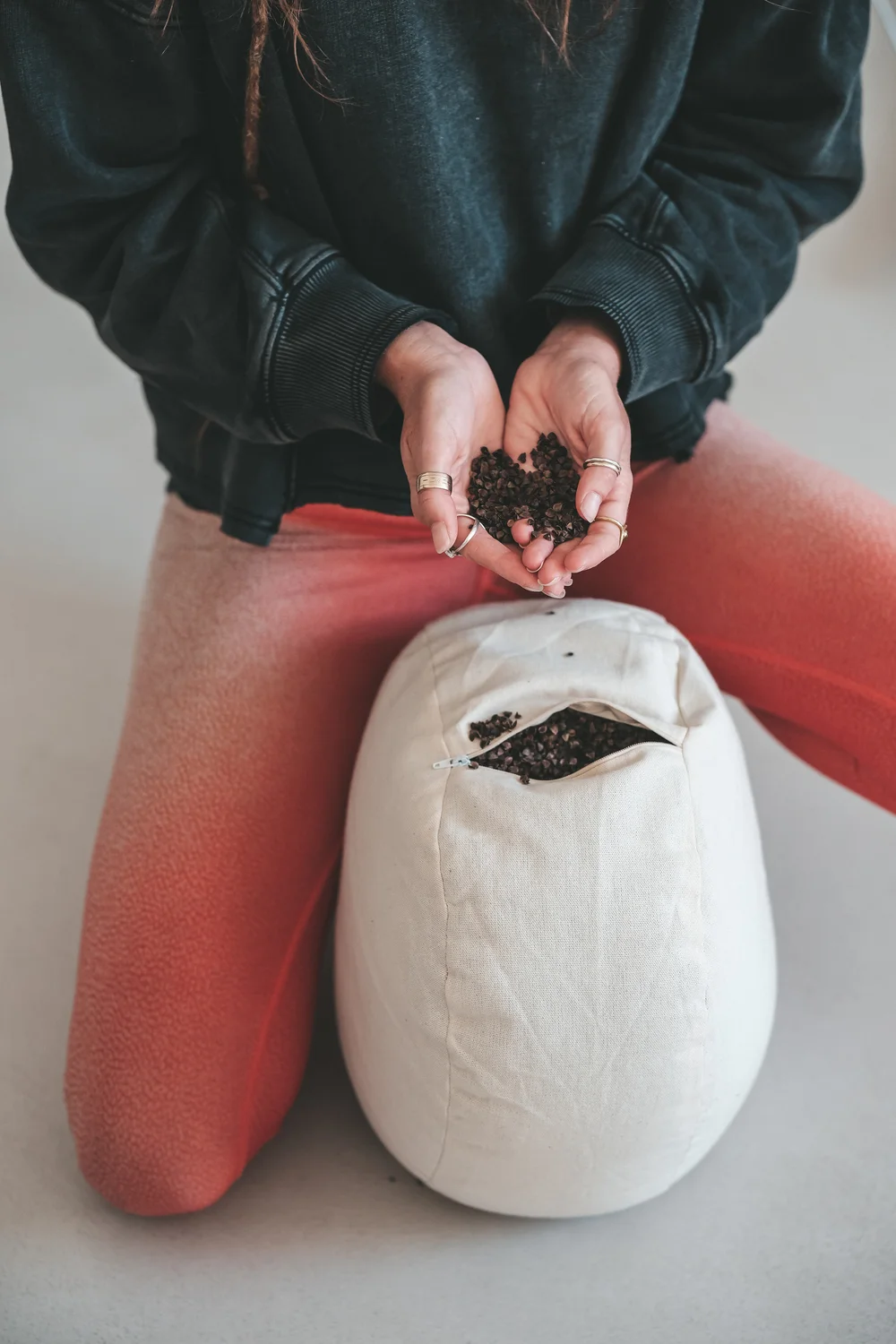Meditation is often regarded as the ultimate journey inward—a practice of stillness, awareness, and enlightenment. But if you've ever tried to meditate for more than a few minutes, you’ve likely encountered an obstacle as ancient as the practice itself: sitting. Sitting meditation may look serene and effortless, but anyone who’s tried it knows it can be physically demanding, especially if you’re not properly supported. That’s where the zafu meditation cushion comes in, offering ergonomic support for deep meditation.

In this comprehensive guide, we’ll explore the history, functionality, and modern uses of the zafu. Whether you’re new to meditation or a seasoned practitioner, understanding this humble cushion can deepen your meditation practice and enhance your experience.
The challenge of sitting meditation
The act of sitting upright without back support—something most meditation traditions encourage—requires careful posture. The human spine is naturally curved, with two concave curves (at the lumbar and cervical regions) and two convex curves (at the thoracic and sacral regions). When these curves are aligned, the spine holds itself upright with minimal muscular effort.
However, modern lifestyles often lead to poor posture. Hours spent sitting in chairs or hunched over screens can cause the pelvis to tilt backward, disrupting the natural alignment of the spine. Without proper support, sitting for meditation can become a painful and energy-draining exercise. This is where the zafu plays a pivotal role.
What is a Zafu?
A zafu is a round meditation cushion with pleated sides, designed to provide elevation and support for sitting meditation. Its shape and height allow the pelvis to tilt forward slightly, which helps align the spine and maintain the natural curves.
Zafus can be used in a variety of meditation postures, including:
- Sukhasana (Cross-legged Pose): Placing the zafu under the pelvis elevates the hips above the knees, promoting comfort and stability.
- Vajrasana (Diamond pose): The zafu is placed between the knees to provide support for the hips, reducing strain on the knees and ankles.
The ancient origins of the Zafu
While most people associate zafu cushions with Japanese Zen Buddhism, their origins can be traced back to ancient China during the Tang dynasty (618–907 CE). The zafu was first introduced as part of Chan Buddhism (known as Zen in Japan), which emphasized seated meditation, or zazen, as a path to enlightenment.
Early materials:
- In China, zafus were traditionally filled with reedmace fibers (a type of cattail plant). These fibers were soft, resilient, and widely available.
- When the zafu made its way to Japan, practitioners began using kapok, a fluffy fiber from the seed pods of the Ceiba tree.
The word “zafu” reflects its origins: in Japanese, za means “seat,” and fu refers to the reedmace filling.
The role of the Zafu in zen Buddhism
In Zen monasteries, the zafu serves both practical and symbolic purposes.
-
Physical support:
- Elevating the pelvis allows the spine to align naturally.
- Sitting with the knees below the hips creates a stable, grounded base.
- Proper posture enhances alertness and mental clarity, key components of effective meditation.
-
Symbolic importance:
- The zafu represents a sacred space for introspection and mindfulness.
- It connects practitioners to a lineage of meditators who have used similar tools for centuries.
The science behind the Zafu’s design
The zafu’s design is not arbitrary—it’s the result of centuries of refinement aimed at optimizing physical comfort and meditative focus. Key features include:
-
Height and shape:
- A typical zafu is 4–6 inches tall. This height allows the pelvis to tilt forward, helping maintain the lumbar spine’s natural concave curve.
- The round shape and gathered sides provide a stable and comfortable seat.
-
Materials:
- Buckwheat hulls: These are popular in modern zafus due to their durability and ability to conform to the body. They shift to accommodate your contours while providing firm support.
- Kapok: Lightweight and resilient, kapok offers a softer feel.
-
Portability:
- Many zafus include a carrying handle, making them easy to transport.
Choosing the right Zafu for your practice
When selecting a zafu, consider the following factors:
-
Filling:
- Buckwheat hulls: Ideal for those who prefer firm support. These zafus hold their shape well and don’t require frequent fluffing.
- Kapok: Softer and more lightweight, kapok-filled zafus are better for those seeking a plush feel.
-
Size:
- Standard zafus come in 14-inch and 18-inch diameters. Larger cushions provide more surface area and are suitable for taller individuals or those with broader hips.
-
Cover material:
- Zafu covers are typically made from durable fabrics like cotton, jute, or polyester. Some are machine-washable for easy maintenance.
Beyond meditation: Other uses for a Zafu
While primarily designed for meditation, zafus are versatile and can be used in various ways:
- Yoga: Provides support for seated poses and forward bends.
- Home Décor: Adds a minimalist and functional touch to living spaces.
- Neck and Back Support: Serves as a cushion for reading or relaxing.
How to use a Zafu
Here’s a step-by-step guide to incorporating a zafu into your meditation practice:
- Position the Zafu: Place the cushion on a flat surface, such as a floor or zabuton (a rectangular mat).
- Sit comfortably:
- For cross-legged positions, sit with your pelvis on the center of the zafu and let your knees rest on the floor.
- For kneeling positions, place the zafu between your knees to support your hips.
- Align Your Spine: Adjust your posture so that your spine feels naturally upright.
- Relax and Meditate: Close your eyes, focus on your breath, and let the zafu support you.
Caring for your Zafu
To prolong the life of your zafu:
- Cleaning: Remove the outer cover and wash it according to the manufacturer’s instructions.
- Refilling: Over time, the filling may compress. Buckwheat hulls or kapok can be added to restore its shape.
Conclusion: Enhancing Your Meditation Practice with a Zafu
The zafu is more than just a cushion—it’s a gateway to a more comfortable and effective meditation practice. Its thoughtful design, rooted in centuries of tradition, offers physical support and symbolic meaning. Whether you’re a beginner or an experienced meditator, a zafu can transform your practice, making sitting meditation not only bearable but enjoyable.
So, the next time you sit for meditation, let the zafu carry you, both physically and spiritually, into the present moment. It’s not just a seat—it’s a partner on your journey inward.




